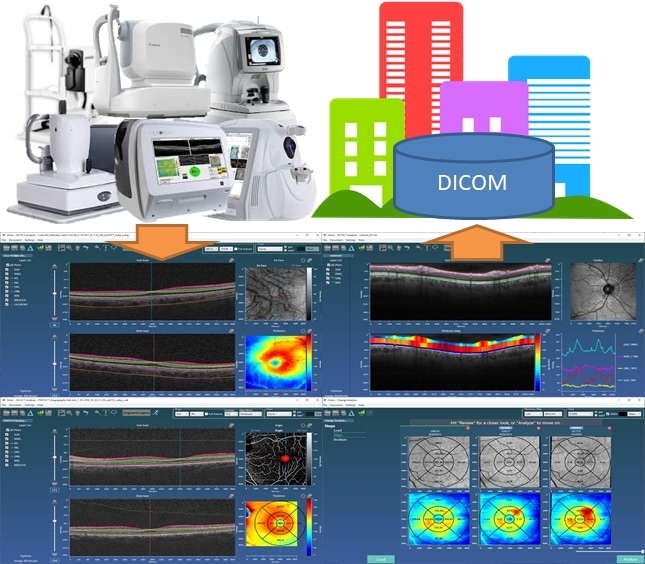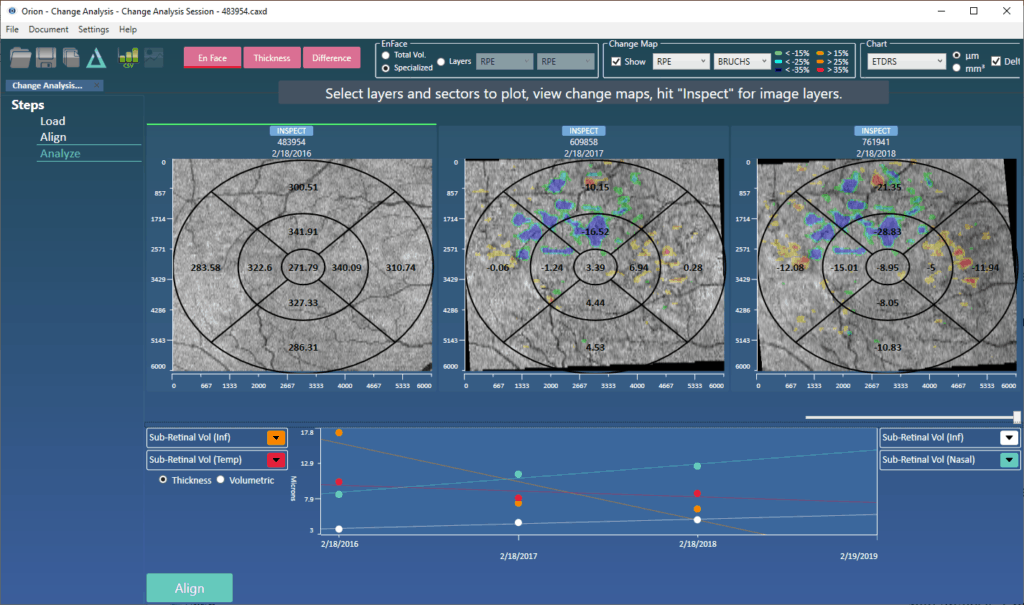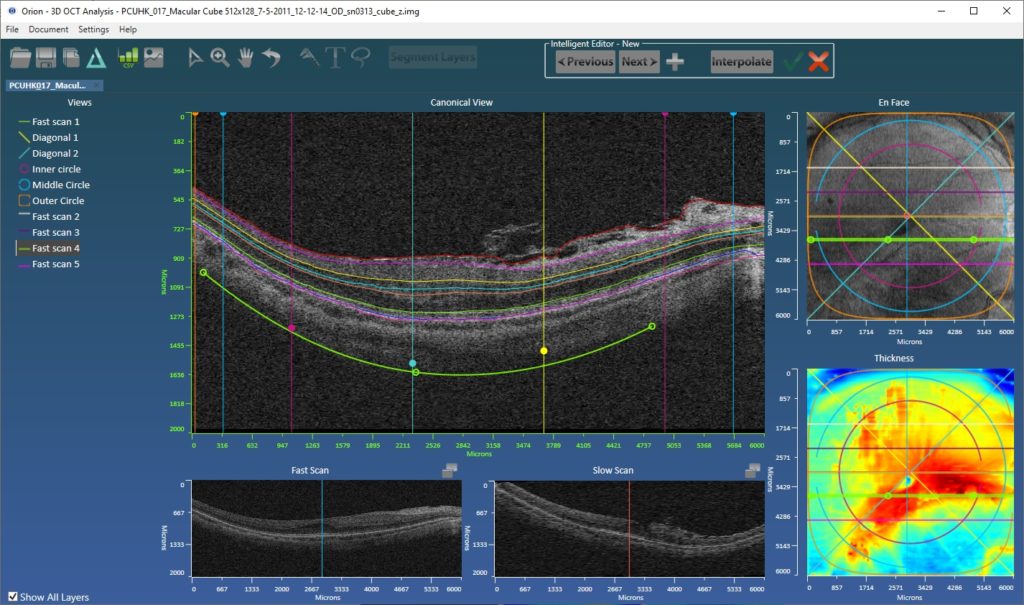Orion Workflow Advantages
Orion is a feature packed research tool supporting OCT analysis. Its key features are:
- Device independence – same algorithm for all devices.
- State of the art analysis tools.
- Multi-layer segmentation.
- Angiography quantification.
- Longitudinal analysis.
- Best in class editing, annotation and visualization tools.
But what is sometimes overlooked is how impactful this is with respect to workflow and time to results. If we break down each of Orion’s components, how does this impact, for example, a clinical trial?
Device Independence
Orion unifies OCT analysis by supporting all OCT devices and their formats with a common algorithm. This means that data from different devices can be analyzed and compared using Orion – allowing the reader to avoid alternating between different software applications to review endpoints. This also means that recruitment for the trial can be simplified and sped up as a single OCT device is not required. With faster recruitment, faster analysis, and more and better endpoints, clinical trials using Orion can conclude earlier – representing significant cost savings in the development of new therapeutics. Furthermore, in supporting all devices and their formats, our DICOM export functionality offers a conduit to existing IT infrastructure that simply would not otherwise exist.

State of the Art Analysis Tools
The analysis software that ships with the devices is extremely limited in terms of functionality. Being research software, Orion has continually evolved to offer best in class analysis tools validated with multiple journal publications. If you are monitoring, for example, drusen volume over time, there is no better solution than Orion. Multiple layer segmentation also supports accurate definition of the different retinal vascular plexuses, which in turn offers more accurate angiography quantification. The workflow is not only fast, it offers more insights into the OCT data. And this can all be automated using batch processing!

Editing, Annotation and Visualization
All data that is used in a trial must be quality controlled and approved by a reader who needs to be able to record each endpoint as quickly and as accurately as possible. So the automated analysis must be fast, and the review tools intuitive and simple. This includes the ability to delineate regions and add calipers to the image data. All summary results formats need to be supported (ETDRS, quadrants and ellipsoidal annuli) and, when necessary, layer editing should be simple and fast. Our patent-pending, intelligent editing wizard automates custom views through the volumetric data, allowing the user to address just what is needed and let the algorithms do the rest.

More information can be found on our website or just get in touch and request a trial! We will also be at booth #932 at ARVO in Vancouver at the end of April.
